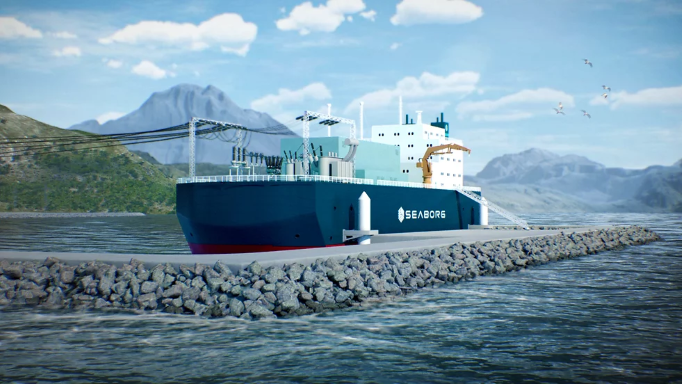Ammonia production from offshore nuclear power
By Julian Atchison on April 13, 2022
Samsung and Seaborg

Samsung Heavy Industries (SHI) and Seaborg have signed a new agreement to develop floating nuclear power plants based on Seaborg’s Compact Molten Salt Reactor (CMSR) technology. The aim is to commercialise turn-key power plants that can move between & moor at key industrial sites. Once moored, the vessel can either connect to onshore electrical grids to meet generation demands, or power P2X projects producing hydrogen and ammonia fuel. The 800 MW unit is designed to have a twenty-four year operational life.
CORE POWER
The new partnership follows a report released by UK-based organisation CORE POWER in January. The report suggests that, while direct nuclear propulsion is an ideal first step in maritime decarbonisation, vessels unable to be retrofitted with small reactors will require zero-carbon alternative fuels like ammonia, and herein lies an opportunity.
Using floating nuclear power to produce e-fuels offshore creates strategically-located refueling points that can service a whole range of maritime transport. One particularly useful application would be at the mouths of major US rivers, with these offshore production centers able to refuel barges working back-and-forth along inland waterways. According to CORE POWER, this application also has the potential to provide “a mixture of electricity, desalinated water, hydrogen, and ammonia to local off-takers”.
A similar concept was presented at last year’s Ammonia Energy Conference in Boston by Lucid Catalyst. Their concept design is for a nuclear-powered, floating production platform for ammonia, targeting a production cost of $250 per tonne, with production to start in 2035.